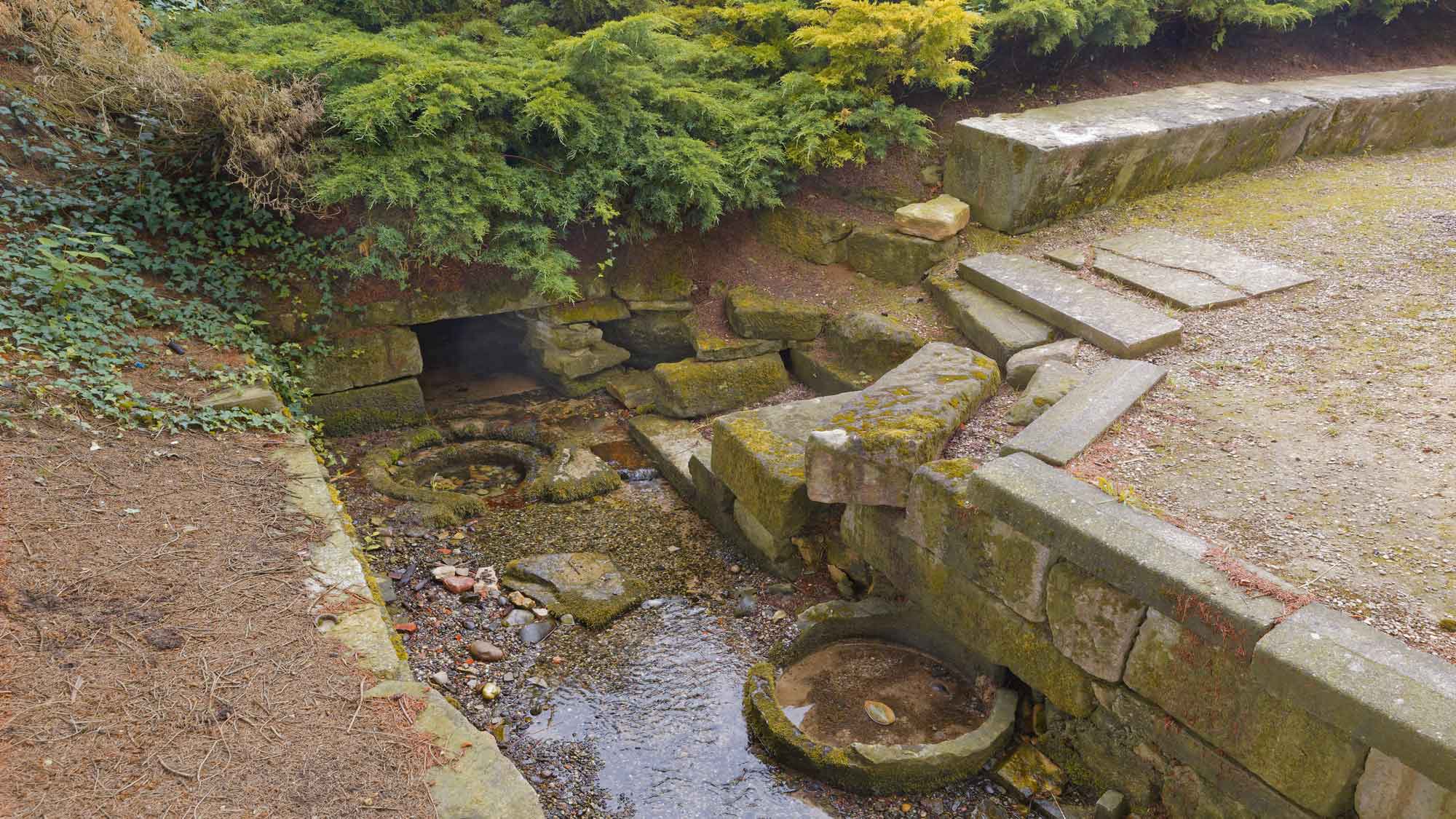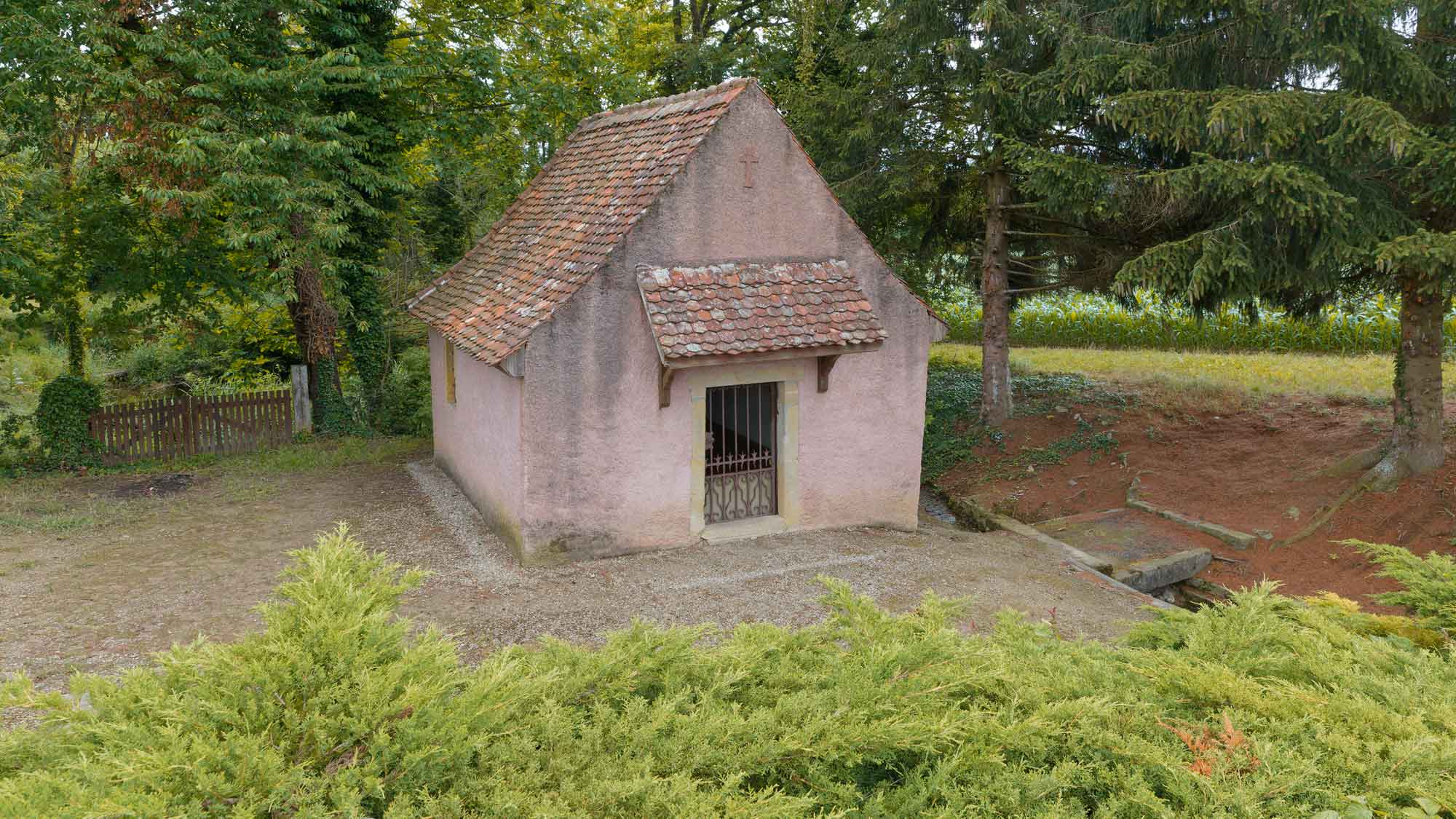The baptismal font at the Apollonia chapel
You are enchanted on the forecourt of the small Chapelle Sainte-Apolline, which is hidden behind a row of dark fir trees outside in the fields, about 800 meters from the northern end of the village from Steinbrunn-le-Bas towards Bruebach. The church is a modest, recently renovated 18th-century building, but the secret of the place is right next door, a few stone steps down. Clear spring water bubbles out of the limestone, which pours into the cool bottom of a millennium-old stone basin. In fact, it is a spring sanctuary from the beginning of the Christianization of our region, presumably the Romans already worshiped this life-giving fountain. Around 150 years ago, Roman bricks, bricks and coins came to light during excavations, evidence of a settlement on the slope of this sunny hill.
The village of Steinbrunn-le-Bas is mentioned as early as the 9th century; it belonged to the Landser bailiwick and was awarded to the lords of Steinbrunn from the 12th to the 14th centuries. Their moated castle was devastated in 1635. In the same year, the widow of the last Truchsess, Marie Françoise von Andlau, built the imposing country house. It can be seen on the right at the exit of the village towards Rantzwiller, with the double coat of arms of the two noble families of Steinbrunn and von Andlau.


